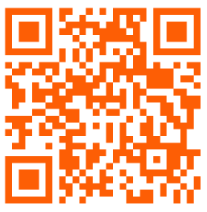Evolution of OHS Risk Assessments
Over the past five years, Occupational Health and Safety (OHS) risk assessments have experienced a significant transformation, driven by a combination of factors. Technological advancements, such as the widespread adoption of digital tools and data analytics, have revolutionised the way organisations identify, assess, and manage risks. Regulatory changes at both national and international levels have introduced stricter requirements for OHS risk assessments, demanding more comprehensive and rigorous approaches. Additionally, there has been an increased focus on proactive risk management, shifting the emphasis from reactive measures to preventative strategies aimed at identifying and addressing potential hazards before they occur. These combined forces have profoundly impacted organisations of all sizes, influencing their operations, financial performance, and reputation.
If there is any way that we can assist, kindly leave your details for one of our Expert Consultants to give you a no-obligation call.
Key Trends in the Evolution of Risk Assessments:
Increased Use of Technology:
- Digital Tools: The adoption of digital tools and software has streamlined the risk assessment process, allowing for more efficient data collection, analysis, and reporting.
- Data Analytics: Advanced data analytics techniques have enabled organisations to identify emerging risks, track trends, and prioritise mitigation efforts.
- Mobile Apps: Mobile applications have simplified the process for workers conducting on-site risk assessments, enabling real-time hazard reporting. The OHS Online mobile app is a component of SafetyWallet's comprehensive cloud-based health and safety management system.
Enhanced Hazard Identification:
- Emerging Risks: Organisations are increasingly focused on identifying emerging risks, such as those associated with remote working, automation, and climate change.
- Proactive Risk Assessment: A shift towards proactive risk assessments has led to greater emphasis on identifying potential hazards before they occur.
Greater Focus on Employee Involvement:
- Consultation: Organisations are increasingly involving employees in the risk assessment process, ensuring that their concerns and experiences are considered.
- Employee Empowerment: Empowered employees play a crucial role in identifying hazards and suggesting improvements to safety measures.
Integration with Other Management Systems:
- Quality Management: OHS risk assessments are being integrated with other management systems, such as quality management systems, to create a more holistic approach to risk management.
- Environmental Management: A growing focus on sustainability has led to the integration of OHS risk assessments with environmental management systems.
Regulatory Changes:
- New Standards: The introduction of new OHS standards and regulations has necessitated more comprehensive and rigorous risk assessments.
- Compliance Requirements: Organisations must ensure that their risk assessments comply with all relevant laws and regulations.
These developments have resulted in OHS risk assessments becoming more sophisticated, data-driven, and employee-centric. By staying up to date with these trends, organisations can improve their safety performance and better protect the health and wellbeing of their workforce.
How Evolving Risk Assessment Practices Have Influenced Organisations:
The approach to and conduct of risk assessments have undergone significant changes in recent years, driven by technological advancements, regulatory shifts, and a growing focus on proactive risk management. These changes have had a profound impact on organisations of all sizes.
Key Influences on Organisations:
Improved Risk Identification and Prioritisation:
- Proactive Approach: Organisations have shifted from a reactive to a proactive approach, identifying potential risks before they materialise.
- Data-Driven Insights: Technology has enabled organisations to analyse vast amounts of data to identify emerging risks and trends.
- Prioritisation: Risk assessments now focus on prioritising risks based on their likelihood and potential impact, allowing for more targeted mitigation efforts.
Enhanced Risk Mitigation Strategies:
- Tailored Solutions: Organisations can now develop more tailored risk mitigation strategies based on their specific needs and circumstances.
- Continuous Improvement: Risk assessments have become an ongoing process, fostering continuous improvement in risk management practices.
- Cost-Effective Measures: By identifying and addressing risks early, organisations can often implement more cost-effective mitigation measures.
Improved Compliance and Regulatory Adherence:
- Regulatory Changes: Risk assessments help organisations remain informed about changing regulations and ensure compliance.
- Evidence-Based Decisions: Risk assessments provide the evidence necessary to demonstrate compliance with regulatory requirements.
- Proactive Mitigation: By identifying and addressing risks proactively, organisations can avoid costly penalties and legal issues.
Enhanced Reputation and Stakeholder Confidence:
- Risk Transparency: Effective risk management can enhance an organisation’s reputation by demonstrating a commitment to safety and sustainability.
- Stakeholder Trust: By addressing risks proactively, organisations can build trust with stakeholders, including employees, customers, and investors.
Increased Resilience and Adaptability:
- Resilience Building: Risk assessments help organisations identify and address vulnerabilities, making them more resilient to disruptions.
- Adaptability: By understanding potential risks, organisations can develop strategies to adapt to changing circumstances.
The evolution of risk assessment practices has provided organisations with valuable tools to more effectively identify, prioritise, and mitigate risks. This has led to improved safety, compliance, reputation, and overall organisational resilience.
Economic Impact of Evolving Risk Assessment Practices on Organisational Turnovers
The evolution of risk assessment practices has had a significant economic impact on organisations, particularly in terms of turnover. Here are some key areas where this impact is evident:
Reduced Costs Associated with Accidents and Incidents:
- Preventative Measures: Effective risk assessments help organisations identify and address potential hazards before they lead to accidents or incidents.
- Reduced Costs: This can result in significant cost savings related to medical expenses, lost productivity, and legal fees.
Improved Productivity and Efficiency:
- Safe Work Environments: A safer work environment can lead to increased employee morale, reduced absenteeism, and improved productivity.
- Efficient Operations: By identifying and addressing risks proactively, organisations can avoid disruptions to their operations, resulting in cost savings and increased efficiency.
Enhanced Reputation and Customer Confidence:
- Trust and Loyalty: A strong safety record can enhance an organisation’s reputation and build trust with customers, leading to increased sales and market share.
- Customer Confidence: Customers are more likely to do business with organisations that prioritise safety and sustainability.
Improved Access to Financing:
- Risk Mitigation: Effective risk management can improve an organisation’s creditworthiness and make it more attractive to lenders.
- Lower Costs of Capital: This can result in lower interest rates and improved access to financing.
Competitive Advantage:
- Differentiation: Organisations that excel in risk management can differentiate themselves from competitors and gain a competitive advantage.
- Market Leadership: By demonstrating a commitment to safety and sustainability, organisations can position themselves as leaders in their industry.
The economic impact of evolving risk assessment practices can be substantial. By investing in effective risk management, organisations can reduce costs, improve productivity, enhance their reputation, and gain a competitive advantage.
How can SafetyWallet help Organisations evolve?
SafetyWallet offers a range of services and tools designed to assist organisations in enhancing their health and safety practices. Here are a few examples of how SafetyWallet can help:
Comprehensive Risk Assessments: SafetyWallet provides tools for conducting thorough risk assessments, helping organisations identify potential hazards and implement effective control measures. This proactive approach ensures a safer working environment.
Policy and Procedure Development: Organisations can access templates and guidance for developing health and safety policies and procedures. This ensures compliance with the Occupational Health and Safety Act and other relevant regulations.
Training and E-Learning: SafetyWallet offers e-learning modules and formal training programmes to educate employees on health and safety practices. This empowers staff with the knowledge they need to work safely and effectively.
Incident Reporting and Management: The platform includes features for reporting and managing incidents, allowing organisations to track safety performance and identify areas for improvement. This helps foster a culture of safety and accountability.
Compliance Monitoring: SafetyWallet assists organisations in staying compliant with health and safety regulations by providing tools for monitoring compliance status and conducting audits. This reduces the risk of penalties and legal issues.
Employee Engagement: By involving employees in the risk assessment process and encouraging feedback, SafetyWallet helps organisations create a more engaged workforce that is committed to safety.
Integration with Other Management Systems: SafetyWallet can integrate OHS risk assessments with other management systems, such as quality and environmental management, providing a holistic approach to organisational risk management.
Access to Resources and Support: Subscribers have access to a wealth of resources, including best practice guides, checklists, and expert support from SafetyWallet’s team. This ensures organisations have the tools they need to implement effective health and safety measures.
Continuous Improvement: SafetyWallet promotes a culture of continuous improvement by encouraging regular reviews and updates of health and safety practices, ensuring that organisations adapt to changing regulations and emerging risks.
Recognition and Rewards: SafetyWallet offers a rewards programme for organisations that demonstrate a commitment to health and safety. This can enhance reputation and motivate employees to prioritise safety.
By leveraging these services, organisations can significantly improve their health and safety performance, protect their workforce, and enhance their overall operational efficiency. The evolving landscape of risk assessment offers organisations significant opportunities to improve their safety performance, enhance their reputation, and achieve long-term sustainability. By staying up to date with these trends and investing in effective risk management practices, organisations can protect their employees, customers, and the environment.
Integrating Walli into Your Health and Safety Strategy
By integrating Walli, your personal Health and Safety AI companion, into your leadership strategy, you can streamline your OHS management, enhance compliance, and foster a culture of safety within your organisation. Walli’s support empowers you to take proactive steps, stay informed, and ensure your employees are protected.
Your role in OHS is not just about meeting legal requirements—it's an opportunity to demonstrate your commitment to your team, improve business performance, and leave a lasting positive impact. Embrace Walli, and transform your workplace safety practices for a safer, more compliant, and productive environment. Let's make safety a cornerstone of your leadership legacy!
Not using Walli yet? Scan the below QR Code to gain access
By leveraging the resources and expertise of SafetyWallet, MySafetyShop, and MAKROSAFE, hospitality businesses can significantly enhance their health and safety practices. This not only ensures compliance with legal requirements but also fosters a culture of safety that prioritises the well-being of both guests and staff. Engaging with these platforms can lead to improved safety outcomes, reduced risks, and a more secure environment for all stakeholders involved.
Integrating Triple P policies, procedures, and practices with Behaviour Based Safety principles is essential for creating a safe and healthy work environment. By combining structural safeguards with behavioural interventions, organisations can effectively mitigate risks, promote a proactive safety culture, and achieve sustained safety excellence.
Our Health and Safety Management System (HSMS) is available at no cost to all SafetyWallet subscribers, and supported by MAKROSAFE team members. This means you are able to get a state-of-the-art system with operational support for your entity thereby improving the health and safety in the workplace as well as improving your legal compliance to Health and Safety Legislation.
Have questions? Engage with us through the chat box on your screen—we're here to guide you toward a safer, more compliant future.
To find out what other Additional Services we offer, please click on the picture below:
SAFETYWALLET In Co-operation with MAKROSAFE and MY SAFETY SHOP
Disclaimer:
Walli can make mistakes. Consider checking important information and please speak to SafetyWallet's support team, should you be in doubt. Please also see: https://www.safetywallet.co.za/termsandconditions



Leave a comment